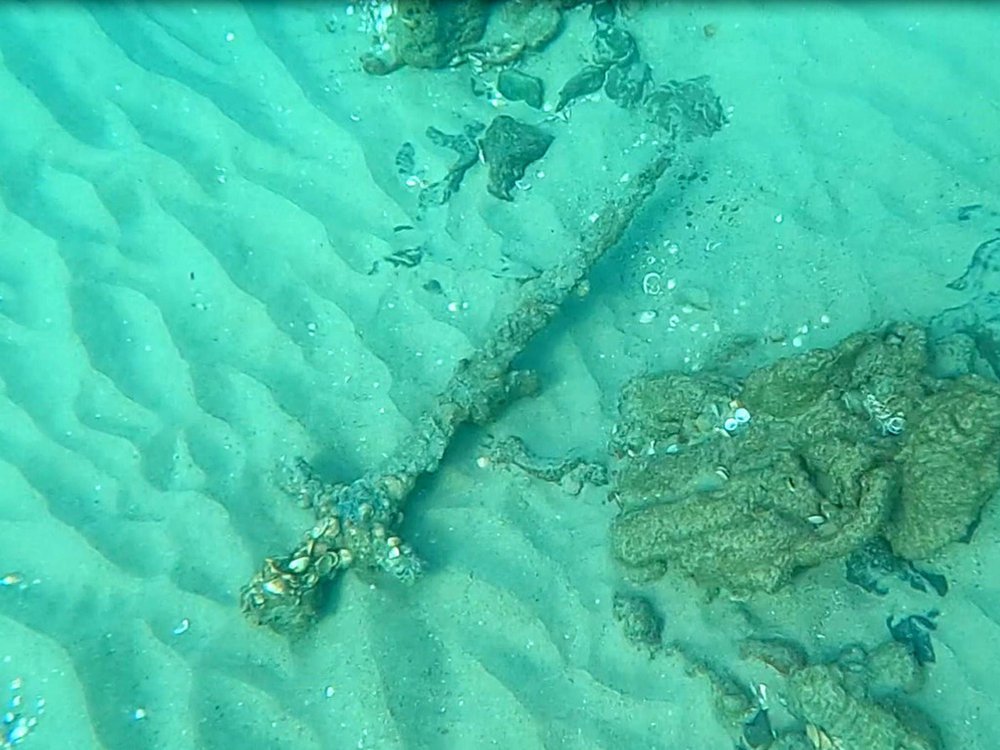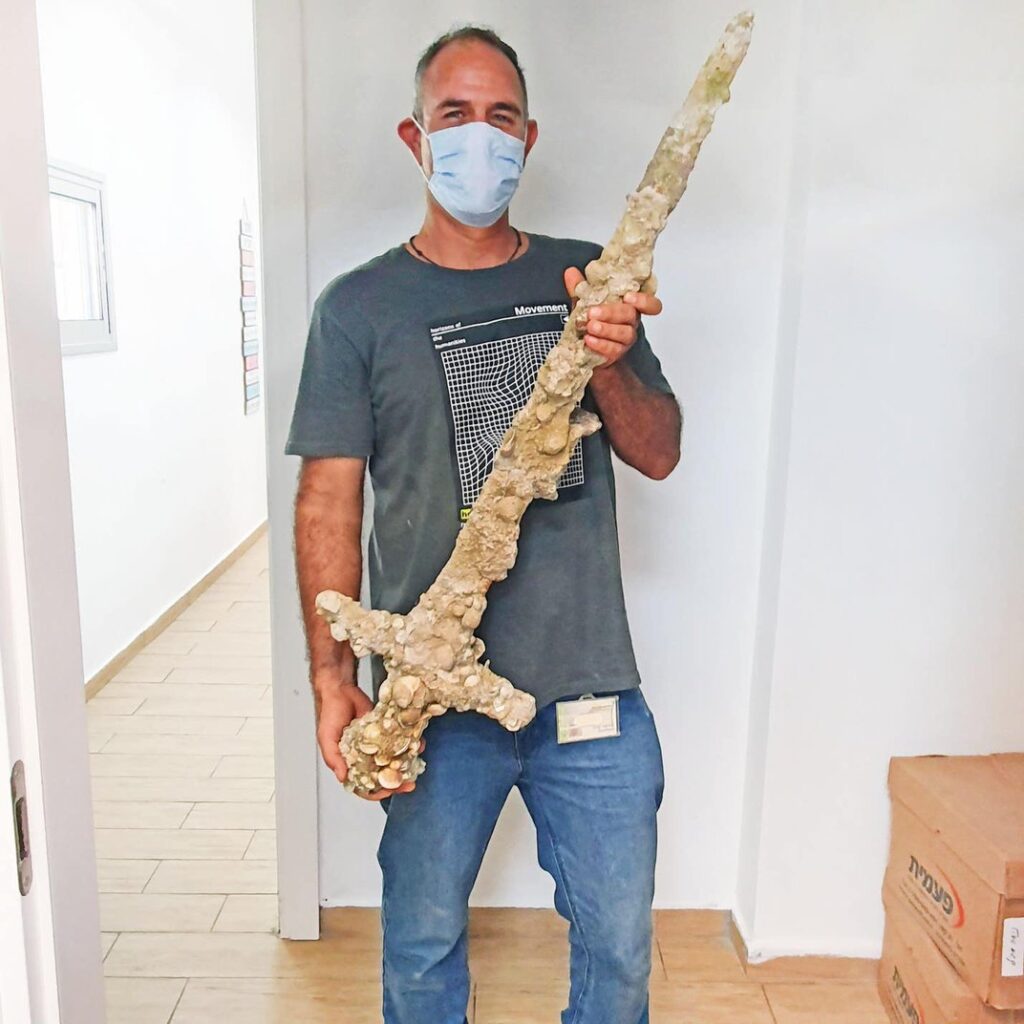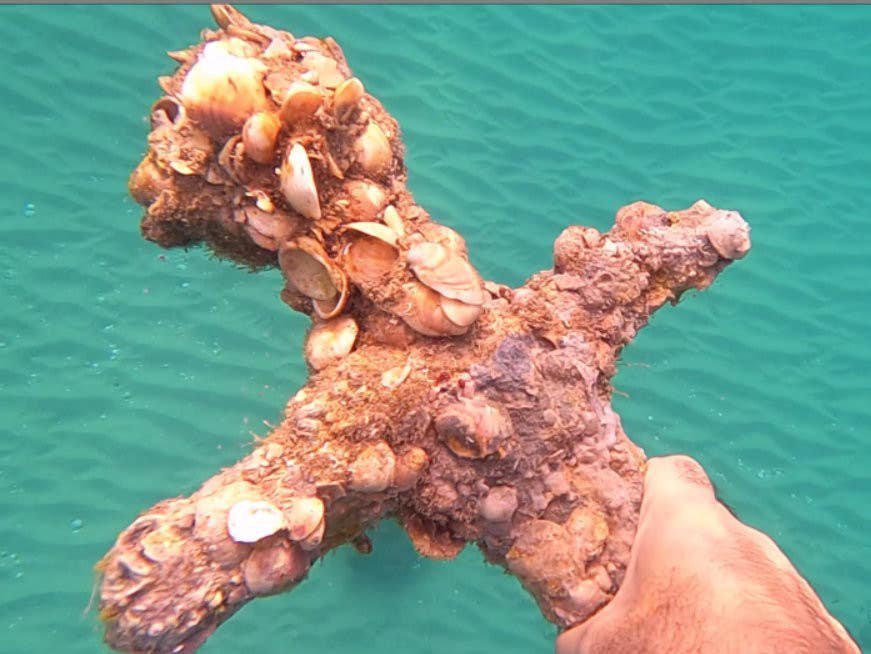‘Beautiful’ 900-year-old Crusader sword discovered by diver off the coast of Israel
A man diving off the coast of northern Israel, not far from his home, recently stumbled onto a 900-year-old sword dated to the time of the Crusades.

Shlomi Katzin, a resident of the town of Atlit, spotted the sword and other centuries-old artefacts on the sea bed off the Carmel coast, where shifting sands had apparently made them suddenly visible, reports Nicky Blackburn for Israel21c.
The four-foot-long sword was covered in shells and other remnants of sea life. Katzin reported the discovery to the Israel Antiquities Authority’s (IAA) robbery prevention unit.
“The sword, which has been preserved in perfect condition, is a beautiful and rare find and evidently belonged to a Crusader knight,” says IAA inspector Nir Distelfeld in a statement.
“It was found encrusted with marine organisms but is apparently made of iron. It is exciting to encounter such a personal object, taking you 900 years back in time to a different era, with knights, armour and swords.”
Archaeologists had already been monitoring the area, a natural cove that offered shelter to ships for millennia, before Katzin’s find, reports Stuart Winer for the Times of Israel. Earlier discoveries have shown that the site was active as long as 4,000 years ago.

Unpredictable conditions in the ocean often bring artefacts to the surface; a rise in the number of people diving recreationally in the area means that more of these objects have reemerged in recent years, says Koby Sharvit, director of the IAA’s marine archaeology unit, in the statement.
“Even the smallest storm moves the sand and reveals areas on the seabed, meanwhile burying others,” Sharvit adds.
In addition to the sword, Katzin spotted pottery fragments and stone and metal anchors, per the Jerusalem Post’s Rossella Tercatin.
Starting in the 11th century, leaders of European nations and the Roman Catholic Church sent Crusader armies to the Middle East to seize sites considered holy by Christians from Muslim rulers.
After the Muslim sultan Saladin retook Jerusalem from the Crusaders in 1187, England’s Richard I led an army against him, travelling south along Israel’s coast from Acre to Jaffa and winning what Richard Spencer of the London Times deems a “great but ultimately pyrrhic victory.”

Since the sword is still covered in encrustations, it’s impossible to say much about it, Sa’ar Nudel, an archaeologist who studies weapons from the Crusades, tells Haaretz’s, Ruth Schuster. The Crusaders and their Muslim Ayyubid and Mamluk opponents all typically used straight swords of similar size and shape, archaeologist Rafi Lewis adds.
“The basic shape of the weapon, a straight sword, didn’t evolve much from the time of the Vikings to the 14th century,” he tells Haaretz.
According to Sharvit, the fact that the sword was found more than 600 feet from the coast suggests it was a Crusader’s weapon. Muslim forces built fortifications along the coast as defences against arriving Christian forces but didn’t travel by sea themselves.
“They destroyed the coastal cities so the Crusaders couldn’t return and reconquer the Holy Land,” the archaeologist says to Haaretz.
The sword is now in the hands of the IAA’s National Treasures Department, per Israel 21c. IAA scientists plan to clean and study the weapon before putting it on display to the public.





